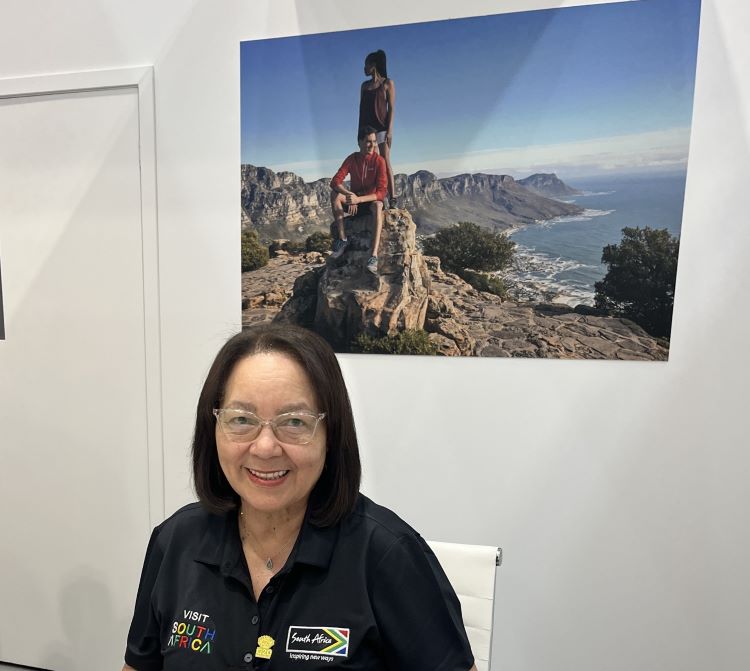PATA India chapter’s ‘Webinar: Asia Pacific Destination Forecast’ unveils the impact of Covid on the industry and what the future holds in terms of recovery for the Asia-Pacific, with a focus on India, which is projecting positive growth in the coming years.
Nisha Verma
Liz Ortiguera, CEO, PATA and Prof. John Koldowski, Advisor, PATA, shared the tourism trends and projections for India market for next two years (2022-24). Starting the presentation, Ortiguera said that people are looking forward to be reconnected and hence “Travel can be a force for good, particularly in Asia”. Giving a general outlook, she said, “There are three brief messages—cautious optimism; there are opportunities for the innovative and strategic; and we have to remind the world that the future is Asia.”
Employee situation
She underlined the fact that millions of jobs, particularly in Asia-Pacific, have been lost due to the pandemic. “We are all keen to get our livelihood back and get people re-employed. Thus, travel will be the growth engine again for the region,” she claimed. Highlighting the role of employees in tourism companies, she said, “The staff has been put through challenges and I think it’s an important time to recognise and appreciate them because these are not the jobs they signed up for, but have done the industry a great service through the pandemic, supporting the recovery and coming out of it.” Ortiguera said that shortage of employees is a common complaint around the world. In North America, Europe and even in China, the great resignation is in effect. “Many hospitality companies are seeing staffing constraints. Also, there is a rise of the conscious consumer and corporate,” she informed.
India shining
Citing a forecast update by Official Airline Guide, she said, “India has outperformed any Asia-Pacific country in the recovery with faster capacity rebuild. We expect India to be the new China over the next five years. While other markets have suffered from under capacity, India has bounced back.” She added, “There is a high interest, not just in marketing inbound to Asia-Pacific, but the power of our consumers, particularly the Indian consumer is one that gets the attention of Europe and North America.”
Sustainability on top
Sharing a research, she said, “The desire for conscious tourism cuts across geography. Around 4,500 travellers in our region were surveyed and a high percentage of them with India scoring particularly high, with 97 per cent of them consider conscious tourism important.” In terms of factoring sustainable tourism practices into their holiday plans, majority of travellers in the region agreed. “India is sitting above 60 per cent, while the average is 57 per cent in this region. There is a big shift post pandemic, whether it is consumers or corporates, there is an intention to more sustainable practices, interest and a sense of responsibility. Our advise for destination operators and service providers is to stay current, be more conscious and start to adapt sustainable travel practices,” she shared.
Eight-point agenda
Claiming that their role at PATA would be to share the best practices so that members can stay dynamic and ahead of the curve, Ortiguera said, “When I started my role at PATA, I had put in an eight-point plan with the intent of trying to deliver on some essentials that would help our membership base and the industry in terms of recovery. Some topics of interest include recovery initiatives, resilience, sustainability and regenerative travel as important market trends.”
Wellness in travel
Adding that all travel today is wellness influenced, Ortiguera said, “Even if primary purpose for your trip is not wellness, you are making 100 decisions in the course of your trip that are wellness related. Travellers are far more conscious of wellness than they were before.”
Destination management
Ortiguera claimed that travellers want to see well-managed destinations. “They are more aware now after the impact of over-tourism and it is important that destinations do not just pitch what they are offering, but also be proactive in terms of management. Hence, we have deployed training to help destinations do that,” she said. “As PATA, we are trying to leverage all our channels to keep the industry and consumers informed on the status of different destinations and new products because many destinations have evolved by responding to things like increased interest in wellness offerings,” she added.
Upcoming events
She also highlighted PATA’s upcoming global events. “We have PATA Destination Marketing Forum in Songkhla, Thailand. Secondly, there is PATA Annual Summit in Ras Al Khaimah. Lastly, we will be hosting an APAC travel Summit with a travel mart in December in partnership with GBTA,” she announced.
Overview of visitor arrivals
Koldowski, in his presentation, gave an overview of how PATA is seeing the potential for visitor arrivals in the next three years, particularly with a focus on South Asia and India. “In 2020, globally International Tourist Arrivals (ITAs) fell off a cliff, but in 2021 there was a slight turnaround. According to UNWTO, while some parts of the world were slowly, struggling out of a deficit, Asia and the Pacific regions remained there through 2021.”
Corresponding to 2019, Koldowski said, “We are not going to get back to 2019 levels of international tourist arrivals anytime soon. In fact, with Covid, we lost 30 years of growth and it is going to take some time to get back to that level.”
India scenario
Sharing the PATA research on Asia-Pacific visitor forecasts 2022-24, Koldwoski said, “Looking at the share of international visitor arrivals into India in 2019, India captured 69 per cent of all arrivals into South Asia. With the impact of Covid-19 and the regulations required to contain it, it is slowly struggling back to its relative significance. It might take another year beyond 2024 for India to do that,” he claimed.
Wicked problems
Koldowski further mentioned that we are now entering an era of wicked problems. “While previously we had relative periods of stability with the occasional disruption, we are now moving into an era of constant disruption, with relatively small periods of stability. We need to get used to that.”
Digitally forward
Ortiguera said, “Digital marketing is essential and critical for any business right now because that is how consumers find business online. If you are not into digital marketing, get into it. Because during Covid many people got used to searching online, ordering online and communicating online. It is not going and will continue.” She added, “The rise of distributed workforce has led to a reduced need for big corporate offices. This gives rise to opportunities as new forms of travel that are not defined into pure corporate or pure leisure.
 TravTalk India Online Magazine
TravTalk India Online Magazine





